Products and Services
Fluid Properties Simulation Challenge

The Industrial Fluid Properties Simulation Challenge is an open competition with the goals of driving improvements in the practice of molecular modeling, formalize methods for the evaluation and validation of simulation results with experimental data, and ensure relevance of simulation activities to industrial requirements. The Simulation Challenge was initiated by the workshop on "Predicting the Thermophysical Properties of Fluids by Molecular Simulation" and is part of the overall vision of the Industrial Fluid Properties Simulation Collective.
Fourier Grid Hamiltonian (FGH) 1D
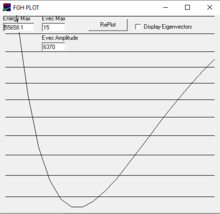
The FGH1D program calculates the eigenvalues (energy levels) and eigenvectors (wavefunctions) for an arbitrary one-dimensional potential. The program can generate potentials of a few fixed forms: Morse, polynomial in x2 - for double wells, cos(nx) - for internal rotations. The program can read in potentials from a file or from the clipboard in the form of x,y pairs. It can interpolate these potentials with a spline fit.
NIST Chemical Kinetics Database (gas phase)
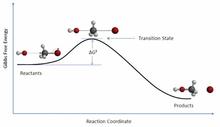
The NIST Chemical Kinetics Database includes essentially all reported kinetics results for thermal gas-phase chemical reactions. The database is designed to be searched for kinetics data based on the specific reactants involved, for reactions resulting in specified products, for all the reactions of a particular species, or for various combinations of these. In addition, the bibliography can be searched by author name or combination of names. The database contains in excess of 38,000 separate reaction records for over 11,700 distinct reactant pairs. These data have been abstracted from over 12,000 papers with literature coverage through early 2000.
NIST Computational Chemistry Comparison and Benchmark Database
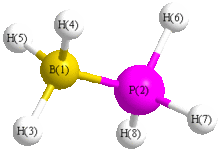
The NIST Computational Chemistry Comparison and Benchmark Database is a collection of experimental and ab initio thermochemical properties for a selected set of molecules. The goals are:
1) Provide a benchmark set of molecules for the evaluation of ab initio computational methods.
2) Allow the comparison between different ab initio computational methods for the prediction of thermochemical properties.
NIST Standard Reference Simulation Website
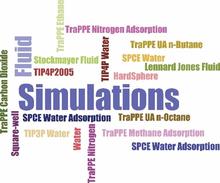
The goal of this project is to publish well-documented simulation results for reliable and well-vetted simulation software for a variety of systems, many of which are commonly used in molecular simulations, that can be treated similar to "standard reference data" that is generated in a laboratory setting.
Program for Computing Ideal-Gas Thermodynamic Functions
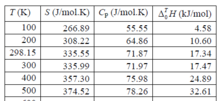
Tables of the ideal-gas thermodynamic functions entropy, isobaric heat capacity, and enthalpy content can be calculated using this program. The necessary input data can be read directly from an output file from the quantum chemistry program Gaussian, or from a keyword-based text file. The default partition function is rigid-rotor/harmonic-oscillator (RRHO), but the program accommodates anharmonic oscillators, electronic excited states, and explicit ladders of energy levels. The program is available in two languages, the original version in Perl and a newer version in Python.
Visual Mass-Spec Share

vMS-Share is an interactive database driven web application developed for search and instant visualization of chromatograms and raw MS data with integrated display of metadata for both identified and unidentified spectra. The main purpose of the website is to effectively share experimental mass spec data across different omics such as proteomics, metabolomics and petroleomics.

